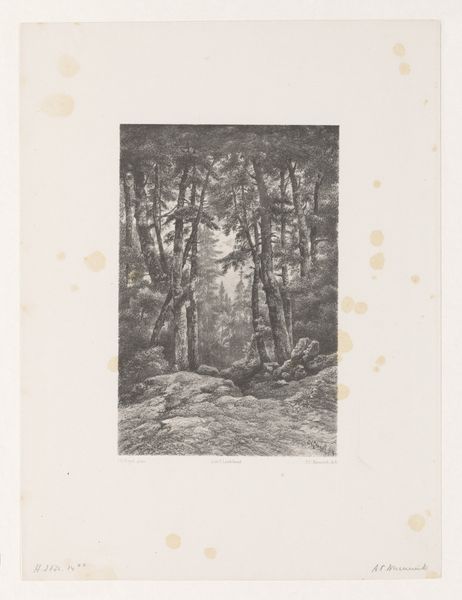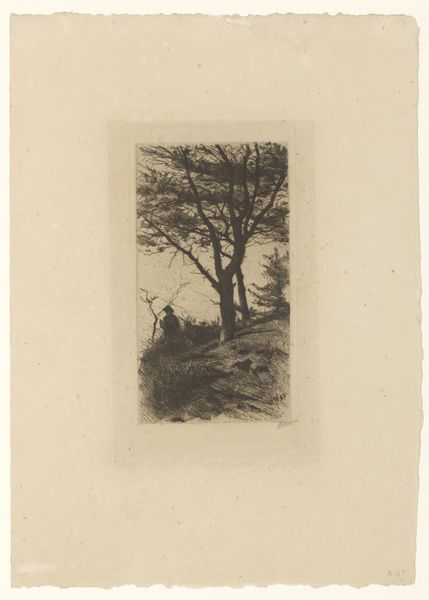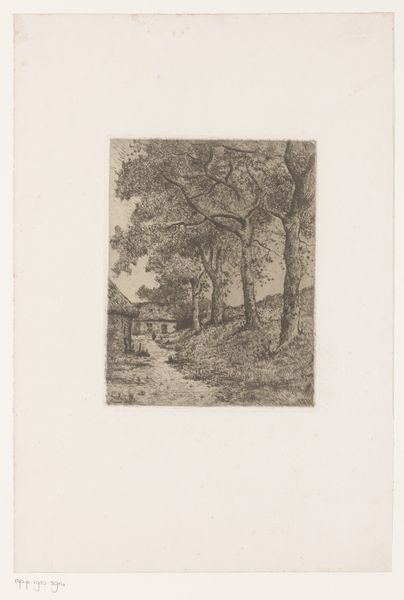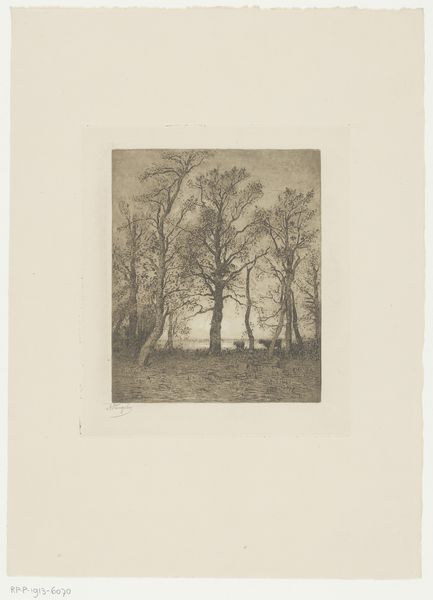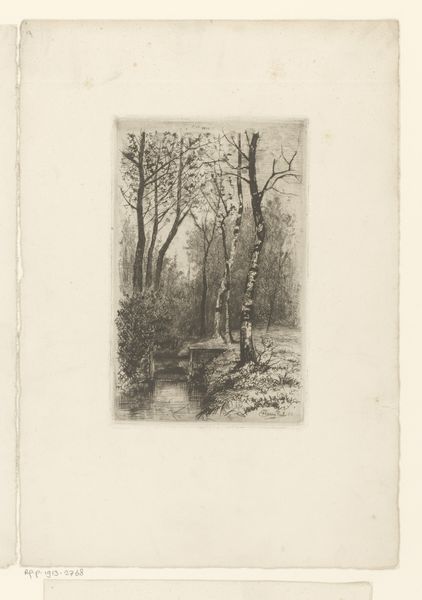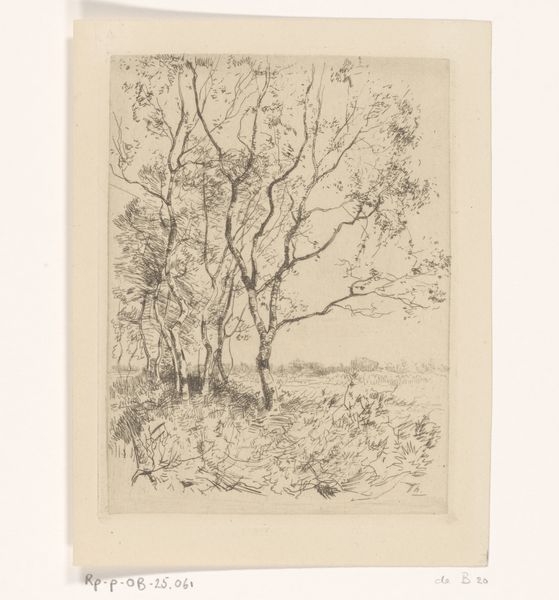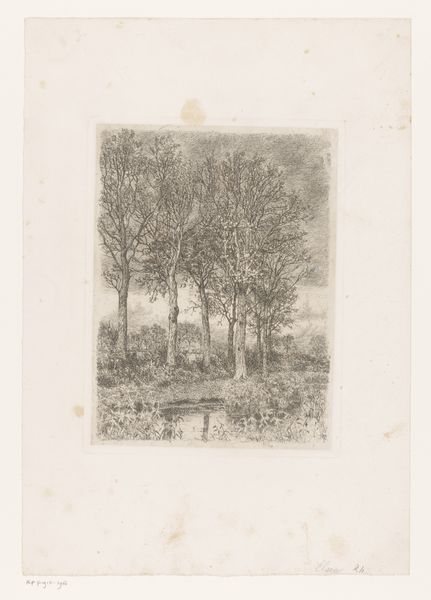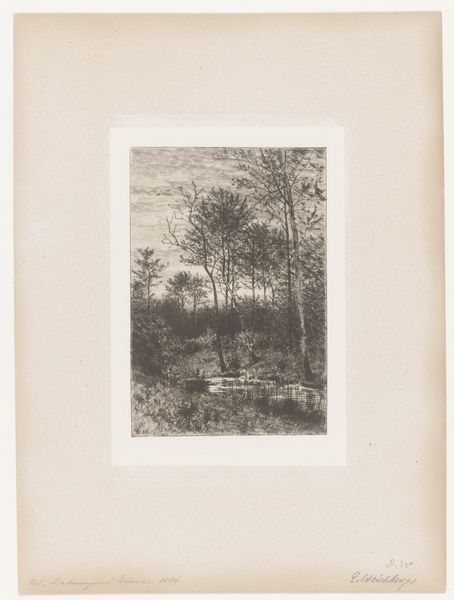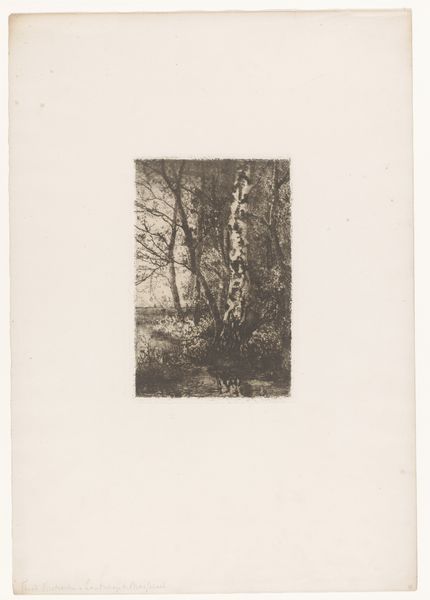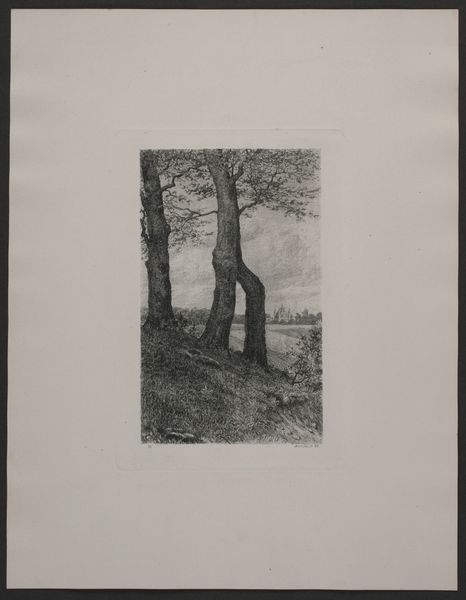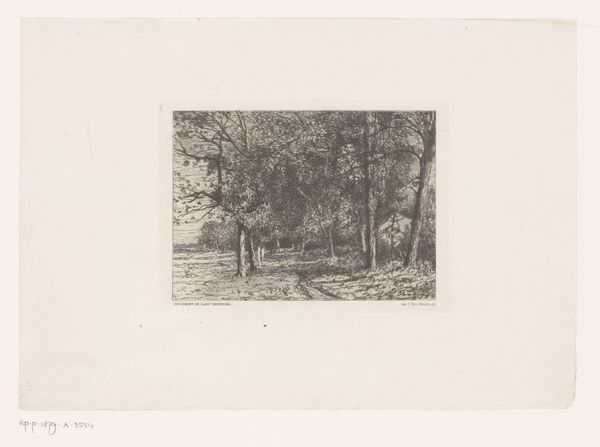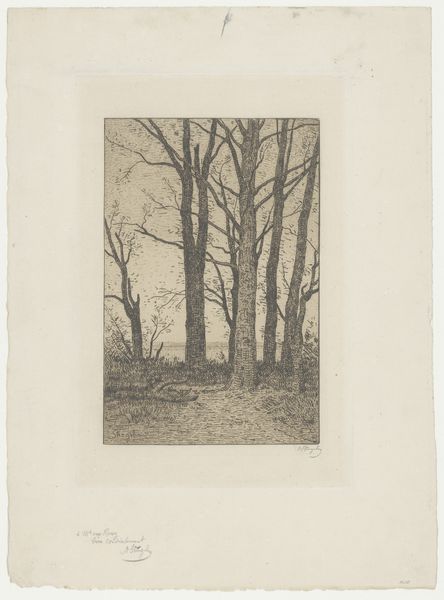
Herder met zijn schapen bij twee bomen 1888
0:00
0:00
heinrichludwigfreiherrvongleichenrusswurm
Rijksmuseum
Dimensions: height 292 mm, width 195 mm
Copyright: Rijks Museum: Open Domain
Curator: What a captivating piece. This etching by Heinrich Ludwig Freiherr von Gleichen-Russwurm, dating from 1888, is titled "Herder met zijn schapen bij twee bomen," which translates to "Shepherd with his sheep by two trees." It's currently held at the Rijksmuseum. Editor: My first impression? A lonely but peaceful existence depicted with stunning detail for such a monochrome palette. The intricacy almost makes you feel like you can hear the babbling brook! Curator: Indeed. Gleichen-Russwurm, despite being a Freiherr, clearly wasn't afraid to engage with the common subjects. Look at the dense texture achieved through etching; it mimics the roughness of the natural environment itself. The visible labor in creating this piece feels appropriate, reflecting the shepherd's own toil. Editor: Precisely. It speaks to the intimate connection between the shepherd, his animals, and the landscape. It's almost a spiritual bond, wouldn't you say? The somber tones contribute to a sense of reflective solitude, don’t they? Curator: Possibly, although I'd argue the "German Expressionism" tag offers more inroad to understand it. Remember that while some Romantics idealized pastoral life, many were undergoing intense hardship; thus the piece highlights these people's experience from the epoch by carefully documenting the tangible realities of work. Editor: That's interesting. And in focusing on material realities, are you suggesting the two imposing trees act as silent witnesses to the social issues of that time? Their twisted branches do look a bit menacing, which perhaps enhances that sense of looming oppression! Curator: Certainly, it’s vital to explore the broader socio-political factors influencing even seemingly simple depictions of rural life. His work becomes valuable historical context. Editor: All considered, it becomes so much more than just a shepherd and some sheep, doesn't it? The delicate details elevate what could have been commonplace. Curator: Precisely, making the work valuable beyond a mere pleasant diversion! Editor: A landscape echoing within landscape, and, in turn, reflected in us. A tiny masterpiece, really.
Comments
No comments
Be the first to comment and join the conversation on the ultimate creative platform.
